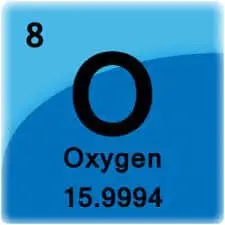Calcium
What is Calcium?
Calcium is a reactive alkaline earth metal that, in the presence of air, generates a dark oxide-nitride layer. The atomic number of calcium is 20, and its symbol is Ca. It is an essential mineral that plays a crucial role in various biological processes within the human body.
Its heavier homologs, strontium, and barium, are most similar to it in terms of both physical and chemical characteristics.
After iron and aluminum, it is the third most prevalent metal and the fifth most plentiful element in the crust of the Earth.
Calcium carbonate, which may be found in limestone and the fossilized remnants of extinct marine life, is the most common form of calcium on Earth.
Other calcium-rich materials include gypsum, anhydrite, fluorite, and apatite. The word “lime” comes from the Latin word calx, which was made by heating limestone.
Although the chemistry of some calcium compounds was not understood until the seventeenth century, they were known to the ancients. Humphry Davy named the element after himself when he electrolyzed calcium oxide to isolate pure calcium in 1808.
Calcium compounds are widely employed across a wide range of industries, including the food and pharmaceutical industries for calcium supplements, the paper industry as bleaches, the cement and electrical insulator industries as components, and the soap business.
However, because of its high reactivity, the metal has limited uses in its pure form. Nevertheless, in small amounts, it is frequently employed as an alloying ingredient in the production of steel and occasionally as a calcium-lead alloy in the manufacture of automobile batteries.
In the human body, calcium is the fifth most abundant element and the most prevalent metal.
The physiological and biochemical processes of organisms and cells depend on calcium ions (Ca2+), an electrolyte.
They are essential for signal transduction pathways, where they function as a second messenger, neurotransmitter release from neurons, contraction of all muscle cell types, cofactors in numerous enzymes, and fertilization.
Protein synthesis, bone formation, and the preservation of the potential difference across excitable cell membranes depend on calcium ions outside of cells.
Characteristics
Classification
The characteristics of calcium, an extremely ductile silvery metal that is sometimes described as pale yellow, are remarkably similar to those of strontium, barium, and radium, the heavier elements in its group.
Twenty electrons make up a calcium atom, which is organized in the electron configuration [Ar]4s2.
Calcium shares the same two valence electrons in its outermost s-orbital as the other elements in group 2 of the periodic table.
These electrons can be readily lost in chemical processes to generate a dipositive ion that has the stable electron configuration of a noble gas, in this case, argon.
As a result, calcium is nearly invariably divalent in its ionic compounds. Because the enthalpy of synthesis of MX2 is substantially higher than that of the hypothetical MX.
Hypothetical univalent calcium salts would not disproportionately react with divalent salts or calcium metal, but they would be stable in relation to their constituent elements.
This happens because the more highly charged Ca2+ cation, as opposed to the hypothetical Ca+ cation, provides a far larger lattice energy.
Alkaline earth metals include calcium, strontium, barium, and radium; they also frequently include magnesium and beryllium, which are lighter and belong to group 2 of the periodic table.
However, the traditional definition of the term “alkaline earth metal” excludes beryllium and magnesium because of their significant differences in their physical and chemical behavior from the other members of the group.
Specifically, they behave more like zinc and aluminum, respectively, and have some of the weaker metallic character of the post-transition metals.
Physical Properties
The melting and boiling points of calcium metal are 842 °C and 1494 °C, respectively; these are greater than those of the nearby group 2 metals, strontium and magnesium.
At temperatures above 450°C, it adopts an anisotropic hexagonal close-packed arrangement similar to that of magnesium, instead of crystallizing in the face-centered cubic arrangement like strontium.
Among its group, it has the lowest density (1.55 g/cm3). Although it can be cut with a knife with effort, calcium is not as hard as lead.
Because of its extremely low density, calcium is a greater conductor of mass than both copper and aluminum, even if it is a poorer conductor of electricity by volume.
Although calcium reacts quickly with atmospheric oxygen, making it an impractical conductor for most terrestrial uses, its use as a conductor in space has been studied.
Chemical Properties
Calcium has a typical heavy alkaline earth metal composition. For instance, calcium hydroxide and hydrogen gas are produced spontaneously when they combine with water faster than magnesium and less quickly than strontium.
Additionally, it forms a mixture of calcium oxide and calcium nitride when it combines with the oxygen and nitrogen in the air.
It divides finely and burns spontaneously in the air to form nitride. Calcium is less reactive in bulk; in moist air, it produces a hydration layer quickly; but, below 30% relative humidity, it can be maintained at room temperature indefinitely.
In addition to the simple oxide CaO, calcium metal can be directly oxidized under high oxygen pressure to produce the peroxide CaO2, and there is some evidence for a yellow superoxide Ca(O2)2.
Although it is not as powerful as the hydroxides of strontium, barium, or the alkali metals, calcium hydroxide, or Ca(OH)2, is nevertheless a strong base.
We are aware of all four calcium dihalides. Two particularly common minerals are calcium sulfate (CaSO4) and carbonate (CaCO3).
Calcium metal dissolves instantly in liquid ammonia to produce a dark blue solution, just like strontium, barium, alkali metals, and the divalent lanthanides europium and ytterbium.
High coordination numbers are prevalent in intermetallic compounds like CaZn13 because of the huge size of the calcium ion (Ca2+).
In some cases, these numbers can reach 24. Oxygen chelates, like EDTA and polyphosphates, are helpful in analytical chemistry and in extracting calcium ions from hard water because they easily bind to calcium.
Smaller group 2 cations typically form stronger complexes when steric hindrance is absent; however, this tendency is reversed when big polydentate macrocycles are present.
While calcium belongs to the same group as magnesium and organomagnesium compounds are widely used in chemistry, organocalcium compounds are less common because they are more reactive and more difficult to make.
Though there has been some recent research on their potential as catalysts. Because Yb2+ (102 pm) and Ca2+ (100 pm) have similar ionic radii, organocalcium compounds resemble organoytterbium compounds more.
The majority of these compounds have minimal temperature preparation requirements; stability is typically enhanced by bulky ligands.
For instance, to create calcium dicyclopentadienyl, or Ca(C5H5)2, calcium metal must be directly reacted with either cyclopentadiene or ferrocene; conversely.
Substituting the bulkier C5(CH3)5 ligand for the C5H5 ligand boosts the compound’s solubility, volatility, and kinetic stability.
Isotopes
The composition of natural calcium consists of five stable isotopes (40Ca, 42Ca, 43Ca, 44Ca, and 46Ca) and one isotope (48Ca), whose half-life is so long that it can be regarded as stable for all intents and purposes.
The earliest (and lightest) element with six naturally occurring isotopes is calcium.40Ca is the most prevalent isotope of calcium in nature, accounting for 96.941% of all naturally occurring calcium.
It is the most massive stable nuclide with an equal number of protons and neutrons, and it is created during the silicon-burning process through the fusion of alpha particles.
The slow decay of primordial 40K also contributes to its occurrence. An additional alpha particle produces unstable 44Ti.
Which rapidly decays to stable 44Ca through two consecutive electron captures; this isotope is the second most abundant and accounts for 2.806% of all naturally occurring calcium.
The remaining four naturally occurring calcium isotopes, 42Ca, 43Ca, 46Ca, and 48Ca, are far rarer and make up less than 1% of total naturally occurring calcium.
The two heavier isotopes are created by neutron capture activities, while the four lighter isotopes are mostly byproducts of the oxygen and silicon burning processes.
The majority of 46Ca production occurs in a “hot” s-process since the short-lived 45Ca needs a high neutron flux to form.
In type Ia supernovae, 48Ca is created through electron capture in the r-process, where its survival is guaranteed by a high neutron excess and a low enough entropy.
The first “classically stable” nuclides with an excess of six or eight neutrons, respectively, are 46Ca and 48Ca. With 20 protons and 28 neutrons grouped in closed shells.
48Ca is a doubly magic nucleus, making it incredibly neutron-rich for such a light element yet also remarkably stable.
Due to the extreme nuclear spin mismatch—48Ca has zero nuclear spin, making it even–even, whereas 48Sc has spin 6+—its beta decay to 48Sc is severely hampered.
The conservation of angular momentum prevents degradation. Although there are two excited states of 48Sc that can also decay, their high spins prevent them from doing so.
Since 48Ti is the weakest nuclide known to experience double beta decay, when 48Ca does decay, it does so by double beta decay to 48Ti.
Although it has never been seen, the heavy isotope 46Ca may potentially double beta decay to 46Ti.
In addition to being doubly magical, the lightest and most prevalent isotope, 40Ca, has also never been observed to undergo double electron capture to 40Ar.
The only element with two primordial doubly magic isotopes is calcium. The half-lives of 40Ca and 46Ca have experimental lower limits of 5.9 × 1021 years and 2.8 × 1015 years, respectively.
41Ca is the longest-living radioisotope of calcium, excluding the nearly stable 48Ca. Through electron capture, it decays to a stable 41K with a half-life of roughly 100,000 years.
Excesses of 41K have suggested that 41Ca was an extinct radionuclide in the early Solar System; traces of 41Ca are still present today because it is a cosmogenic nuclide that is constantly recreated by neutron activation of naturally occurring 40Ca.
There are numerous other known calcium radioisotopes, ranging in age from 35Ca to 60Ca. All of them have substantially shorter half-lives than 41Ca, with 45Ca (half-life of 163 days) and 47Ca (half-life of 4.54 days) being the most stable.
While proton and neutron emission start to become important decay modes close to the nuclear drip lines, isotopes heavier than 44Ca often experience beta minus decay to isotopes of scandium, and isotopes lighter than 42Ca typically undergo beta plus decay to isotopes of potassium.
Similar to other elements, the relative abundance of calcium isotopes is changed by a number of processes.
The mass-dependent fractionation of calcium isotopes that occurs when calcium minerals like apatite, aragonite, and calcite precipitate from solution is the most well-studied of these processes.
These minerals have a preference for incorporating lighter isotopes, resulting in an enhanced solution of heavier isotopes in the surrounding solution.
At ambient temperature, this enrichment is around 0.025% per atomic mass unit (AMU). The customary method for expressing mass-dependent.
Variations in calcium isotope composition involve comparing the ratio of two isotopes (often 44Ca/40Ca) in a sample to the same ratio in a standard reference material. The difference between common earth minerals’ 44Ca/40Ca is roughly 1%.
History
Although calcium compounds have been known for millennia, it wasn’t until the 17th century that their chemical composition was established.
Lime was used as plaster for statues and as a building material as early as 7000 BC. The earliest known lime kiln was discovered in Khafajah, Mesopotamia, and dates around 2500 BC.
The Great Pyramid of Giza began to employ dried gypsum (CaSO4·2H2O) at the same period. Later on, Tutankhamun’s tomb plaster would be made from this material. Alternatively,
the ancient Romans employed lime mortars, which were heated limestone (CaCO3). Calx, which means “lime” in Latin, is where the term “calcium” originates.
Due to the water heating, Vitruvius observed that the resulting lime was lighter than the original limestone. Joseph Black established in 1755 that this was caused by the loss of carbon dioxide, a gas that the ancient Romans had not recognized.
Antoine Lavoisier surmised in 1789 that lime might be an oxide of a basic element. Five “salifiable earths” (ores that could be made to react with acids to produce salts.
The Latin word salis means “salt”) were listed by Lavoisier in his elemental table: chaux (calcium oxide), magnésie (magnesia, magnesium oxide), baryte (barium sulfate), alumina (alumina, aluminum oxide), and slice (silica, silicon dioxide).
Lavoisier reasoned about these “elements”: Since all metallic substances have a stronger affinity for oxygen than carbon does, they have not been able to be reduced to a metallic state and are only known to us as oxides, confusing them with earth.
As a result, we are likely only familiar with a small portion of the metallic substances found in nature at this time.
It is highly likely that barytes, which we have just organized with earth, are in this state because it has been shown in several experiments to have properties that are almost identical to those of metallic materials.
It’s even feasible that nothing more than metallic oxide, irreducible by any known process, make up the substances we refer to as earth.
Humphry Davy separated calcium and its congeners, barium, strontium, and magnesium, for the first time in 1808.
Davy separated calcium and magnesium by combining a mixture of the corresponding metal oxides with mercury(II) oxide on a platinum plate that was used as the anode.
The cathode was a platinum wire that was partially submerged in mercury, in accordance with the electrolysis research of Jöns Jakob Berzelius and Magnus Martin af Pontin.
Following electrolysis, magnesium- and calcium-mercury amalgams were produced; the metal was then obtained by distilling the mercury.
It is not possible to create pure calcium in large quantities with this method, and it took more than a century to discover a viable commercial process for producing it.
Occurrence and Production
After iron and aluminum, calcium is the third most abundant metal and the fifth most prevalent element in the Earth’s crust at 3%.
In the lunar highlands, it ranks as the fourth most plentiful element as well. The Earth’s surface is covered in sedimentary calcium carbonate deposits, which are the fossilized remains of ancient marine life.
There are two types of these deposits: orthorhombic aragonite, which occurs in more temperate climates, and rhombohedral calcite, which is more prevalent. oceans).
The Bahamas, the Florida Keys, and the Red Sea basins are composed of aragonite deposits; other examples of this type of mineral include limestone, dolomite, marble, chalk, and Iceland spar.
The main component of corals, seashells, and pearls is calcium carbonate. Other significant calcium minerals include apatite ([Ca5(PO4)3X], X = OH, Cl, or F), gypsum (CaSO4·2H2O), anhydrite (CaSO4), fluorite (CaF2), and gypsum (CaSO4·2H2O).
China produces between 10,000 and 12,000 tonnes of calcium annually, followed by Russia with 6,000 to 8,000 tonnes and the US with 2000 to 4,000 tons.
France and Canada are two of the smaller producers. Around 24000 tons of calcium were produced in 2005.
The United States uses about half of the world’s extracted calcium, using around 80% of the output annually.
Davy’s electrolysis technique is still applied on molten calcium chloride in China and Russia.
Calcium is more amenable to lathe machining and other conventional metallurgical processes because it is less reactive than strontium or barium.
Which leads to a durable oxide-nitride coating. Instead, high-temperature reduction of lime with aluminum produces calcium in the US and Canada.
Geochemical Cycling
Tectonics, climate, and the carbon cycle are all connected through the calcium cycle. Simply put, when mountains rise, calcium-containing rocks, such as certain granites, are exposed to chemical weathering and release Ca2+ into surface water.
After being carried to the ocean, these ions combine with dissolved CO2 to produce limestone (CaCO3), which eventually sinks to the sea floor and is combined with other minerals to build new rocks.
Dissolved inorganic carbon” (DIC) refers to dissolved CO2 as well as carbonate and bicarbonate ions.
In reality, the process is more intricate and involves the bicarbonate ion (HCO−3) that is produced when CO2 and water combine at the pH of seawater:
Ca2+ + 2HCO3 ⟶ CaCO3 ↓ + CO2 + H2O
into the lithosphere as a result of the process. As a result, one CO2 molecule is eventually removed from the surficial system (atmosphere, ocean, soils, and living things) by each Ca2+ ion produced by chemical weathering.
This CO2 is then stored in carbonate rocks, where it is expected to remain for hundreds of millions of years.
Thus, CO2 is removed from the ocean and atmosphere by the weathering of calcium from rocks, which has a significant long-term impact on climate.
The majority of CO2 is instantly transformed back into HCO-3 at saltwater pH. One CO2 molecule is net transported from the ocean/atmosphere
Applications
Because of its great chemical affinity for sulfur and oxygen, steelmaking is the industry in which metallic calcium is most commonly used.
Once they have developed, its oxides and sulfides offer steel liquid lime aluminate and sulfide inclusions that float out.
After treatment, these inclusions become small and spherical and spread throughout the steel, enhancing castability, cleanliness, and general mechanical qualities.
In maintenance-free car batteries, calcium is also utilized to reduce water loss and self-discharging by using 0.1% calcium-lead alloys rather than the more common antimony-lead alloys.
These alloys occasionally contain aluminum as well because of the possibility of expansion and breaking.
Lead-calcium alloys are substituted for lead-antimony alloys in casting. Additionally, calcium is used to reduce the amount of graphitic carbon in cast iron, strengthen aluminum alloys used in bearings, and purge lead of bismuth impurities.
Some drain cleaners contain calcium metal, which works to produce heat, and calcium hydroxide, which saponifies fats and liquefies proteins—like those in hair—that clog drains.
In addition to metallurgy, calcium’s reactivity is used as a getter for oxygen and nitrogen as well as to extract nitrogen from high-purity argon gas.
In addition, it serves as a reducing agent in the uranium, thorium, zirconium, and chromium production processes.
Since it interacts with hydrogen to generate solid calcium hydride, from which hydrogen can be easily retrieved again, it can also be used to store hydrogen gas.
Many uses for calcium isotopes have resulted from calcium isotope fractionation during the production of minerals.
Specifically, related applications in medicine and paleoceanography are based on the 1997 discovery by Skulan and DePaolo that calcium minerals are isotopically lighter than the fluids from which the minerals precipitate.
The calcium isotopic composition of soft tissues in animals whose bones have calcified with calcium reflects the relative rates of skeletal mineral production and dissolution.
It has been demonstrated that variations in the calcium isotopic composition of urine in people are associated with variations in the balance of bone minerals.
The 44Ca/40Ca ratio in soft tissue increases and vice versa when the rate of bone production outpaces the rate of bone resorption.
This association suggests that calcium isotopic readings in blood or urine may help identify metabolic bone disorders like osteoporosis early on.
A comparable mechanism may be found in seawater, where a rise in 44Ca/40Ca occurs when the ocean’s intake of fresh calcium is greater than the rate at which Ca2+ is removed through mineral precipitation.
The first evidence of seawater 44Ca/40Ca change across geologic time was published in 1997 by Skulan and DePaolo, who also provided a theoretical justification for the shifts.
This discovery has been supported by more recent studies, which show that the ocean is never in a “steady state” with regard to calcium input and output and that the Ca2+ content in seawater is not constant.
Given the intimate relationship between the marine calcium cycle and the carbon cycle, this has significant climatological ramifications.
Among other applications, food, medicines, and medicine all employ a lot of calcium compounds. Tricalcium phosphate, calcium lactate, and calcium diphosphate, for instance, are added to the diet to replenish calcium and phosphorus.
The latter is also utilized in antacids and toothpaste as a polishing agent. Pharmaceutical companies utilize the white powder calcium lactobionate as a suspending agent.
Calcium phosphate is a leavening agent used in baking. Calcium acetate is a component of liming rosin and is used to manufacture metallic soaps and synthetic resins.
Calcium silicate is used as a reinforcing ingredient in rubber. Calcium sulfite is used as a disinfectant and as a bleach in papermaking.
The List of Essential Medicines by the World Health Organization includes calcium.
Food Sources
Dairy products including yogurt and cheese, sardines, salmon, soy products, kale, and breakfast cereals with added calcium are some examples of foods high in this mineral.
Tolerable Upper Intake Levels (ULs) for combined dietary and supplemental calcium have been established by the European Food Safety Authority (EFSA) and the U.S.
Institute of Medicine (IOM) because of concerns about long-term undesirable side effects, such as kidney stones and artery calcification.
According to the IOM, a person’s total daily consumption for ages 9 to 18 cannot exceed 3 g; for ages 19 to 50, it cannot exceed 2.5 g; and for ages 51 and beyond, it cannot exceed 2 g.
EFSA decided that there wasn’t enough data available for children and adolescents to establish ULs, thus they established the UL for all adults at 2.5 g/day.
Biological and Pathological Role
Function
Large amounts of the necessary element calcium are required. In addition to serving as an electrolyte, calcium is essential for bone formation, the synthesis and proper operation of blood cells, and the health of the digestive, circulatory, and muscular systems.
It controls, for instance, blood coagulation, neuron transmission, and muscle contraction. As a result, the body strictly controls the quantities of calcium both within and outside cells.
Calcium is able to participate in this function because the Ca2+ ion creates molecules with a broad range of solubilities, allowing the synthesis of the skeleton, and stable coordination complexes with several chemical compounds, including proteins.
Binding
Proteins can bind the carboxyl groups of glutamic acid or aspartic acid residues, and interact with phosphorylated serine, tyrosine, or threonine residues.
Or chelate calcium ions through γ-carboxylated amino acid residues to complex calcium ions.
The first approach is used by the digesting enzyme trypsin; the third is used by the bone matrix protein osteocalcin.
Other bone matrix proteins that use both the first and second are osteopontin and bone sialoprotein.
Enzymes are frequently activated directly by binding calcium; however, additional enzymes can also be activated via noncovalently interacting with direct calcium-binding enzymes.
Additionally, calcium anchors proteins connected to the cell surface by binding to the phospholipid layer of the cell membrane.
Solubility
A sample of the diverse solubility of calcium compounds is that tricalcium phosphate, which is soluble in 1000 μM, makes up hydroxyapatite, the substance that makes up bones in an organic matrix, and dicalcium phosphate, which makes up 85% of extracellular calcium, is very soluble in water.
Nutrition
Calcium is a frequent ingredient in multivitamin nutritional supplements; however, the way calcium complexes are made can have an impact on their bioavailability, which varies depending on how soluble the salt is.
Calcium citrate, malate, and lactate are highly accessible, but oxalate is less so. Calcium gluconate, calcium carbonate, and calcium citrate malate are further calcium formulations.
About one-third of the calcium consumed is absorbed by the intestine as free ions, and the kidneys subsequently control the plasma calcium level.
Hormonal Regulation of Bone Formation and Serum Levels
By permitting and promoting the deposition of calcium ions in the bone, parathyroid hormone and vitamin D facilitate the production of new bone while leaving the existing bone mass and mineral content unaffected.
This allows for rapid bone turnover. Cell surface receptors trigger the release of parathyroid hormone when plasma calcium levels drop.
This hormone then stimulates the entry of calcium into the plasma pool by removing it from specific kidney, gut, and bone cells.
However, the bone-forming effect of parathyroid hormone is countered by calcitonin, whose secretion rises as plasma calcium levels rise.
Abnormal Serum Levels
Overconsumption of calcium can lead to hypercalcemia. However because the intestines absorb calcium somewhat inefficiently, elevated serum calcium is more likely the result of excessive parathyroid hormone (PTH).
Release or possibly excessive vitamin D intake, both of which help the body absorb calcium. Excess calcium salts accumulate in the heart, blood vessels, or kidneys as a result of all these disorders.
Anorexia, nausea, vomiting, memory loss, disorientation, weakened muscles, increased urination, dehydration, and metabolic bone disease are among the symptoms.
Chronic hypercalcemia usually results in the calcification of soft tissue and its associated significant repercussions.
For instance, calcification can lead to disruption of laminar blood flow and loss of vascular wall elasticity, which can ultimately induce thrombosis and plaque rupture.
On the other hand, low levels of calcium or vitamin D can lead to hypocalcemia, which is frequently brought on by insufficient parathyroid hormone secretion or malfunctioning PTH receptors in cells.
Neuromuscular excitability is one of the symptoms, which may lead to tetany and interfere with cardiac tissue’s capacity to conduct.
Bone Disease
Since the formation of bones depends on calcium, hydroxyapatite or the organic matrix in the molecular structure or organization of bone is implicated in the development of many bone diseases.
A decline in the mineral content of bone per unit volume is known as osteoporosis, and it can be managed with calcium, vitamin D, and bisphosphonate supplements. Osteomalacia, or softening of the bones, can result from inadequate intake of calcium, vitamin D, or phosphates.
Safety
Metallic calcium
Calcium metal reacts exothermically with acids and water, causing severe corrosive irritation when it comes into touch with bodily fluids.
The same effects on the mouth, esophagus, and stomach occur when calcium metal is eaten, and it can be fatal. Long-term exposure is not known to have any specific negative effects, though.
FAQ
What calcium does do in the body?
Although it also has a significant impact on blood clotting, muscular contraction, normal cardiac rhythms, and nerve function, calcium is most commonly linked to strong bones and teeth.
Who needs high calcium?
How much calcium you require depends on your age, activity level, and gender. The top limit of 2,500 mg of calcium per day is advised for persons aged 19 to 50. The daily maximum is 2,000 mg for people 51 years of age and above.
How much calcium per day?
An adult needs 1,000 milligrams of calcium daily on average. For women over fifty and men over seventy-one, the daily dose rises to 1,200 mg. “It’s best for your calcium intake to come from your diet, which is very achievable since it’s a mineral found in many foods,” according to Dr.
How can I get 100 daily calcium?
Dairy goods like cow’s milk and yogurt, cheeses like Emmental and gouda, green veggies like broccoli and spinach, and mineral water with high calcium content (more than 150 mg/liter) are some examples of foods high in calcium. Moreover, dairy products manufactured from low-fat cow’s milk are high in calcium.
Which dry fruit gives calcium?
Oranges that have been dried Fortified with vitamin C and 43 mg of calcium per 100g serving, dried oranges are a great option for dried fruit snacks.
How can I get calcium without milk?
Almond milk and soy milk, especially calcium-fortified varieties, are popular substitutes for milk. Some vegetables have more calcium than others, such as broccoli, black-eyed peas, spinach, rhubarb, and okra.








9 Comments